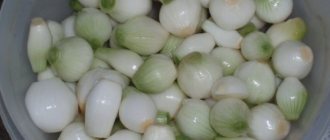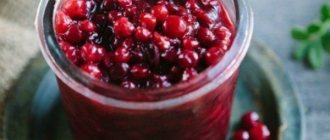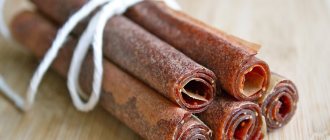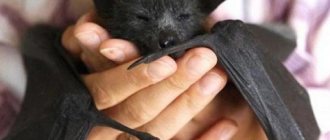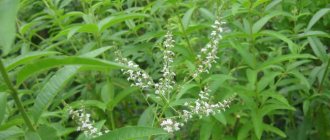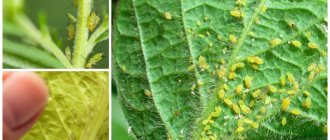Perhaps the most useful preparation for the winter is dried lingonberries. After all, this wild berry, growing in hard-to-reach swampy places, has a large supply of vitamins, microelements, and even a natural antiseptic. It is during drying that the maximum amount of nutrients is retained in lingonberries.
You can dry both whole fruits and berry puree. In the first case, you get an excellent preparation for making medicinal tea or decoction. The second contains an ancient Russian dish, pastila, which can be a healthy alternative to sweets.
Lingonberry marshmallow is good because it can be stored for a very long time without any difficult conditions. This dried dessert can be made with just one ingredient, or you can choose a more complex recipe.
The slight bitterness and sourness of the not too sweet berry in the sugar-free marshmallow recipe will be appreciated by people who are indifferent to sweets. And those with a sweet tooth will most likely like versions of this dish with sugar or honey. Among the lingonberry marshmallow recipes given in this article, everyone can choose an option to suit their taste.
How long to dry lingonberries?
You can dry lingonberry leaves and shoots in an oven or household dryer using artificial heating. The temperature in the drying equipment should not exceed 40 degrees; in this case, the drying process for lingonberries will take approximately 4-5 hours.
Interesting materials:
What fine will PFR officials charge for an error in the SZv form? Please indicate the amount in rubles? What is the penalty for failure to issue a cash receipt? What is the fine for selling cigarettes without a license? What layer of atmosphere do we see in the sun? What layer of glue should I apply to the foam? Which specialist trims the frenulum? What is the method of reproduction for potatoes? What is the shelf life of oranges? What is the shelf life of quartz watches? How long does it take to investigate an accident?
Beneficial properties of dried lingonberries
For a long time, lingonberries have been used to treat many diseases. This plant contains beneficial properties from both the berries and the leaves.
Beneficial properties of dried lingonberries:
- thanks to their unique composition, they support the activity of the cardiovascular system (lingonberries contain a lot of vitamins A and C, as well as potassium, magnesium and chromium);
- can be used as a natural antiseptic for sore throats, colds, inflammatory diseases of the urinary tract (lingonberries contain a natural antiseptic - benzoic acid);
- the diuretic property of the fruit also helps to successfully restore the functioning of the urinary system, fight gout, rheumatism;
- tannins contained in dry lingonberries help remove harmful substances from the body;
- the copper present in it has a positive effect on the body in case of problems with the pancreas and hypertension;
- catechins, pectins, organic acids help improve digestion, increasing acidity in the stomach and stimulating the production of digestive enzymes (therefore, dried lingonberries are useful for chronic pancreatitis, gastritis with low acidity);
- In addition, a fruit drink made from this berry helps quench thirst, relieve intoxication, and improve immunity.
We must remember that despite the abundance of beneficial properties of dried lingonberries, there are also contraindications to its use.
Important! Dried lingonberries are contraindicated for peptic ulcers of the duodenum and stomach, gastritis with high acidity.
Calorie content of dried lingonberries
The nutritional value of lingonberries is difficult to overestimate. It is a storehouse of vitamins, microelements, amino acids, dietary fiber and proper carbohydrates.
The energy value of the bog native is low, so it is considered a dietary product.
100 g of dried product contains:
- 314 kcal (15.4% daily value);
- carbohydrates – 80.2 g (35.8% of the daily value);
- fat – 1 g;
- proteins – 0.3 g;
- dietary fiber – 2.5 g (23% daily value);
- water – 16 g.
Use of dry lingonberry
Dried lingonberries are used both for medicinal purposes and as a food product. In addition to the healing properties already listed, it increases appetite and gives strength to the body.
Teas and decoctions are prepared for treatment, but dried fruits are used more widely in cooking:
- added to yoghurts, muesli and ice cream;
- when baking (add to pancakes, pies);
- when preparing sauces;
- compotes are made from it;
- coated with glaze or simply rolled in powdered sugar (you get healthy candies).
Advice! Before use, the dried product must be soaked for some time to restore and soften.
Nutritional value per serving
% of daily value
Based on your age, weight and activity. Serves as reference information.
Log in or register and we can display your daily intake of proteins, fats and carbohydrates
Basic:
| fresh lingonberries fresh lingonberries Ingredient Lingonberries have a noble and pleasant taste with a slight bitterness; they are used for making drinks, as a filling for baked goods, and as a base for the famous lingonberry sauce. To learn more | 1 kg |
General principles for preparing lingonberry marshmallows
Pastila can be prepared with the addition of various ingredients, but the principle of preparation is the same in all cases.
The technology for producing marshmallows comes down to three stages:
- Making puree (using one of the methods described above).
- Boil the mixture (to the consistency of liquid sour cream).
- Preparing lingonberry marshmallows in the dryer (in the oven on parchment, at a temperature of 80 ° C, the process may take 2–6 hours, which depends on the thickness of the layer, in an electric appliance - a little longer).
The dried marshmallow will easily separate from the parchment paper. When ready, it can be cut into pieces, sprinkled with powdered sugar and placed in a storage container.
Making lingonberry marshmallows in a dehydrator is a fairly simple process, although it does require time.
Lingonberry marshmallow without sugar
This recipe is the simplest. All you need is lingonberries. Preparation steps:
- The puree can be prepared in any way, but more beneficial properties will be preserved when using the option without thermal effects on the fruit.
- Place the resulting mass on a baking sheet (layer thickness should not exceed 3 mm) and place in the oven for 2 hours.
- Place another one on the dry layer and send it to dry again (you should get 4-5 layers in total, but you can do less).
- Cut the finished marshmallow into slices and store in a dry, dark place.
Lingonberry marshmallow with honey
Lingonberry marshmallow with the addition of honey has a pleasant taste and aroma, and also carries the beneficial properties of forest berries and flower nectar. For 1 kg of lingonberries take approximately 400 g of honey.
Cooking steps:
- Lingonberry puree is boiled down a little, then allowed to cool.
- Combine the berry mass with honey and mix thoroughly until smooth (you can beat it).
- Dry the resulting mixture as usual, in thin layers.
- The finished marshmallow is cut into pieces and stored in a dry, dark place.
To prepare this marshmallow, rapeseed honey is usually used, which crystallizes better.
Recipe for lingonberry marshmallows with sugar
Lingonberry pastille with sugar will replace candy for those with a sweet tooth, and it is much healthier. For 1 kg of berries you will need 200 g of granulated sugar.
Step by step recipe:
- Add sugar to the finished puree, stirring the mixture constantly.
- When the sugar crystals are completely dissolved, the mass is boiled until thickened.
- Next, dry using one of the standard methods.
- The finished marshmallow is cut into beautifully shaped pieces and packaged for storage.
Lingonberry and apple pastille
The most popular fruits for making marshmallows are apples. The puree from them is well beaten, and the lingonberry marshmallow with the addition of apple becomes airy.
To prepare this delicacy you take:
- apples – 6 pcs.;
- lingonberries - 4 tbsp.;
- granulated sugar – 1.5 tbsp.
Cooking process:
- Lingonberries and apples, peeled and cored, are steamed together and ground into puree.
- Add sugar and stir the mixture until it is completely dissolved and beat.
- To dry, spread the mass in a thin layer (3–4 mm) and send it to the dehydrator until completely dry, then repeat the process, increasing from 3 to 5 layers (you can make the pastille single-layer, then it is not cut, but simply rolled into a roll).
- The dried product is cut into cubes and placed in a container.
Advice! For this recipe, it is better to take Antonov apples (or any other sweet and sour variety). They contain more dry matter and have a pleasant aroma.
Antonovka pastila does not require boiling and turns out especially tasty.
Delicious lingonberry pastille with blueberries
Lingonberries and blueberries often coexist in the forest, and the combination of the bitterness of the former and the tart sweetness of the latter is very successful.
To prepare pastille you will need:
- 1 kg of lingonberries;
- 0.5 kg blueberries;
- 300 g sugar.
Cooking process:
- Mix the berry puree with granulated sugar and stir until the crystals are completely dissolved.
- Beat the mixture in a blender until thick.
- The homogeneous mass is spread on a tray in a thin layer, dried, and the process is repeated, increasing the layers.
- The finished dried sweet is cut into pieces and placed in storage containers.
Attention! This pastille is especially useful for people with poor eyesight, since blueberries (and lingonberries too) have a beneficial effect on visual function.
Steamed berries
The fruits are poured into a pan, which must be covered with a lid and placed in the oven for 2 hours. The set temperature is 160 degrees.
The door should be kept ajar to allow moisture to evaporate. Then pour it into a jar, which should be sterilized in advance and immediately closed with a plastic lid.
Even if the berries suddenly become gray in color and slightly flattened, it’s okay - the valuable qualities will not be lost.
Store in a cool, dark place for several months: cellar, refrigerator or balcony.
Step-by-step recipe with photos
Wash the lingonberries, leaving them in a colander to allow the water to drain. For now, let's grind sea salt with Provençal herbs. How much salt to add and what seasonings are a matter of taste. I cook it not too salty, so that you can snack on a few berries.
While the lingonberries are still wet, sprinkle them with Provençal herbs and salt. Mix thoroughly and gently.
Place baking paper on a baking sheet. Pour in the lingonberries and spread them over the surface, trying not to let the berries bunch up.
Dry in the oven, using convection mode, stirring the berries occasionally. Let's set the temperature to 80–90°C. You can open the oven door a little. Check the readiness of the berries, since the technical characteristics of the stoves are different for everyone. I pulled out the berries slightly soft and dried them at room temperature for a few more hours.
The lingonberries turned out to be dried, and not completely dry. It is better to store such berries in an airtight jar in a cool place.
Features of collecting lingonberry leaves
In order for dried lingonberry leaves to be brewed in winter and used as a cure for diseases, it is important to choose the moment for collection when the raw material has the richest chemical composition.
During the harvesting process, it is important to take into account the location of the lingonberry and its condition, calendar dates, time of day, weather, as well as the age of the leaf itself.
Deadlines
The ideal time to prepare medicinal raw materials is the beginning of spring. There is no point in going to the forest barely waiting for the snow to melt, because the young leaves should have time to bloom.
However, it is the early harvest of green mass that is the most useful, since with the activation of sap flow, all the vital forces of the plant are directed into it, and, therefore, every substance and compound that determines the healing properties of lingonberries is at this moment contained in the leaf plate in the maximum possible quantity.
Did you know? Witches, shamans and healers always went to collect the herbs they needed for healing and rituals on the night of the full moon. This has a scientific explanation: during the full moon, the vital forces of plants are concentrated in the aboveground part, while the new moon is the best time for harvesting roots.
A little later, in the stages of budding, flowering and fruiting, a redistribution of nutritional components occurs, and their main part begins to strive for flowers, ovaries and fruits, forcing them to ripen more actively.
In different climatic zones and depending on specific weather conditions, the period of formation of young shoots and fresh green mass of the current year may not coincide, but it is worth focusing on approximately April, before the flower buds begin to open.
Not so successful, but also a good option is autumn. After the last fruit on the bush has reached full biological ripeness (usually lingonberries finish ripening in late August - early September), and there are still several warm weeks left before winter, the plant again begins to grow green mass. If for some reason the training camp could not be held in the spring, there is a chance to do it at the end of the season.
There is no point in harvesting in summer. The material collected during this period of time not only has a relatively poor vitamin and mineral composition, but also does not dry well and then quickly deteriorates, so a full-fledged medicine cannot be obtained from such raw materials.
We recommend you find out: the benefits and harms of raspberry leaf tea.
Terms and rules
In order for the plant to dry better, it must be dry and fresh. Herbalists recommend collecting medicinal raw materials at the beginning of the day, but not in the early morning, but after the sun has dried the dew on the plants.
Daytime and evening time are less suitable for harvesting , since too bright rays are stressful for tender young leaves; from excessive lighting they lose their juiciness and elasticity (the amount of juice in the leaf plate at the time of collection should be maximum, then during the drying process the liquid will evaporate , preserving all useful substances in concentrated form).
Cloudy weather for collection is allowed, but it is important that the air humidity is not too high.
It is obvious that improving your health, and, even more so, curing a specific disease with the help of nature’s gifts is possible only on the condition that the raw materials from which the corresponding folk remedy is prepared are environmentally friendly.
Important! It is impossible to harvest leaves of medicinal plants during rain or immediately after it: such material will become warm, mold or rot during the drying process.
The presence of heavy metal salts, industrial waste, urban dust, dangerous pesticides and other foreign impurities that inevitably accumulate in plants located in environmentally unfavorable areas is unacceptable in any medicinal collection.
- A direct contraindication for use as a material for drying is the leaves of lingonberries growing:
- within the city limits;
- near industrial enterprises and other facilities, the operation of which is directly or indirectly related to air or water pollution;
- near the roadway, even if the traffic on it is not very busy;
- in any other environmentally unsafe places.
The best option for collecting leaves is a forest or your own suburban area. In this case, it is desirable that the bush is reliably protected from the wind, which can cause dust on its leaves, since no one washes the leaves before drying. Not all leaves are equally suitable for medicinal purposes.
It is better to select them according to the following criteria:
- small and, if possible, identical in size;
- absence of integrity violations, signs of pest damage and other external defects, as well as contamination;
- juicy green color;
- proximity to the top of the shoot (young leaves are more useful than old ones, but the plate must be fully formed, so you should try to cut off about the third leaf from the top and the next few copies located lower along the shoot).
You can collect material for harvesting using two methods - individual leaves or whole shoots (in the latter case, the top of the branch is cut off at a height of 4–6 cm).
The first method is more labor-intensive, but its advantage is that during transportation, separately folded leaves are much less likely to break than when they are attached to shoots randomly placed in a bag, bucket or basket.
Important! It is strictly forbidden to pull out branches along with roots. Numerous young shoots around the bush are the basis for the formation of new plants.
When cutting leaves or branches, you must remember that the lingonberry bush needs an above-ground part to survive. A little rejuvenating pruning is even beneficial for the plant; it stimulates more active growth of new shoots, but you cannot get too carried away with such “thinning.”
It is equally important to stack the collected material correctly. Only whole leaves are suitable for drying, and therefore you need to ensure that during transportation and subsequent procedures with raw materials it does not wrinkle or break.
DESCRIPTION
Berries and preparations made from them are mainly associated with sweetness. Although berries, even the sweetest ones, can be used to make wonderful sauces and seasonings.
I dry sour berries, such as lingonberries or cranberries, with salt and aromatic herbs. These berries are an excellent ingredient for pies with cabbage or meat. They are good in pilaf and casseroles. Add a few berries to an omelet, pizza or savory pastries and the taste of the dish will sparkle with new nuances. I also like to serve dried lingonberries with wine. The Ezidri dryer will be a great help for such workpieces!
Lingonberry marshmallow at home
You can dry not only whole berries, but also lingonberry puree. The result is a very tasty, long-known dried delicacy - marshmallow. To prepare lingonberry marshmallow, you need to prepare a puree of berries, and then dry it using one of the available methods.
There are two main ways to prepare lingonberry puree:
- From fresh berries. Grind the lingonberries with a blender until a homogeneous mass is obtained (you can strain the puree for a better consistency).
- From pre-steamed fruits, you can simmer lingonberries in a pot or cauldron under a lid (to do this, place the container in an oven heated to 70–80 °C and leave for 3 hours). Or blanch in a saucepan for 10 minutes (per 1 kg of fruit - 1 tbsp. water), stirring constantly until the berries release juice.
Steamed berries are also crushed in a blender and filtered.
